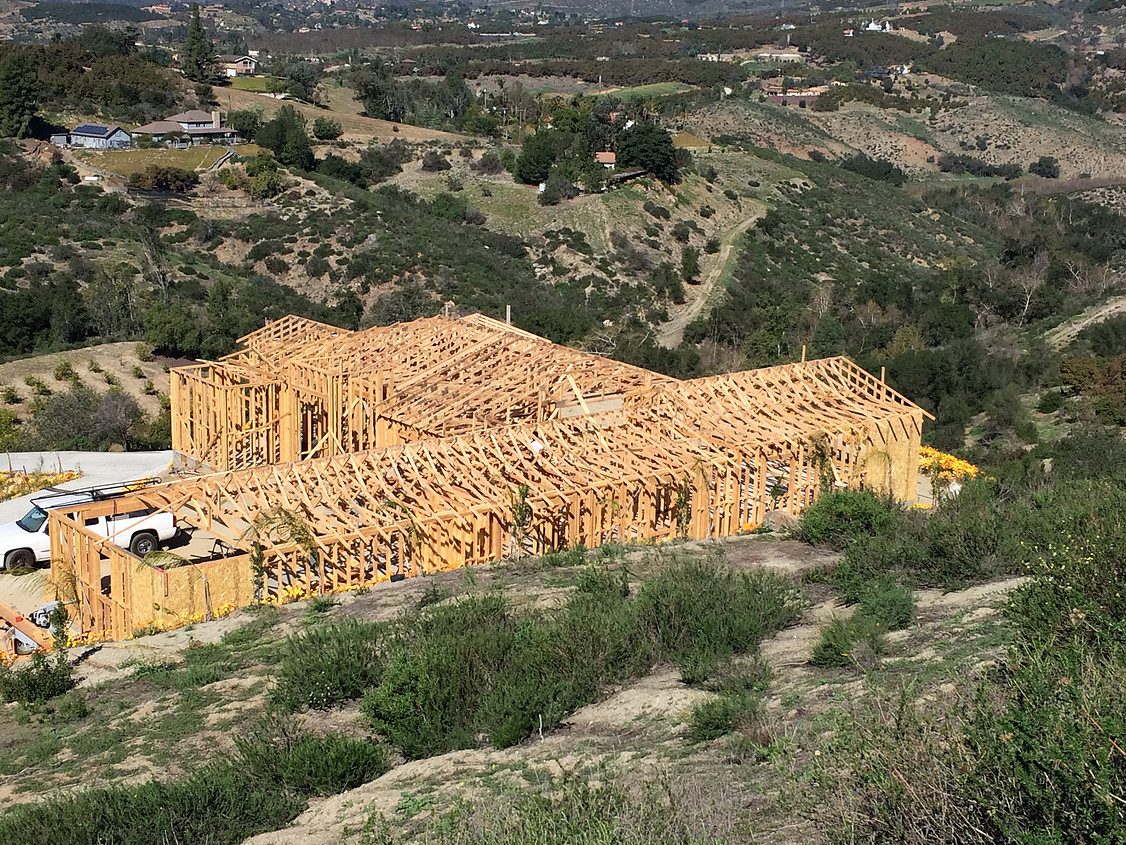The two most popular styles of roofing that utilize wooden trusses are hips and gables. Both styles have advantages and disadvantages, and both can ultimately be a good choice for a home depending on the owner’s needs and preferences. Either style can be strong and well-built using quality wood truss products, which will significantly reduce the cost and time spent on either style of roof.
Hip vs. Gable: What’s the Difference?
Hip and gable roofs are both quite common in today’s homes. Gables, which feature two flat faces that form an “A” shape, may be slightly more common, especially on smaller homes, but hip roofs are often seen in areas where homes are custom built. A hip roof has four sloping sides that meet at the top in a ridge.
From these basic definitions, there can be many variations. For hip roofs, some of the varieties include:
- Pyramid hip. This is the simplest type of hip roof which creates a single peak at the top. It is named for its pyramid shape and is often repeated in different sizes for a custom roofing look on a home.
- The mansard features two slopes on each side of the roof, with the bottom slope being steeper than the top. A variation of the mansard, known as a combination roof, reverses this and flares the bottom slope wider than the top. Both looks are popular in architectural styles that mimic certain historical periods.
- Hip and valley. A hip and valley roof is simply a series of hips that include low-lying areas known as valleys. Care must be taken in constructing this type of roof to allow for proper water drainage so that rain and snow do not build up in low areas.
For gable roofs, varieties can include:
- Open or boxed gables. Most gables are either open at the end or closed in, with the roofline extending beyond the end of the gable. These are known respectively as open or boxed gables and are common on ranch homes built in a straight, rectangular footprint.
- Cross gables. Another common method of utilizing gable roofing is to have gables make right angles to each other, forming a cross or even an L-shaped home.
- Gambrels and saltboxes. When gables are made with irregular shapes, the gambrel or saltbox is the result. Gambrels are reminiscent of barn roofs, while saltboxes are popular on one-and-a-half story styles that slope down sharply in front but leave room for a second floor in the back.
Advantages and Disadvantages of Hips and Gables
Both hip and gable roofs have advantages and disadvantages, based on their structure.
Advantages of hip roofs:
- Better performance in high winds. Because hips do not present a flat end surface to the wind, they are less likely to suffer from shear in high wind situations.
- Easier to build. Hip roofs are often easier to build than gable roofs and save time on construction jobs. However, they often cost more than gables.
- May save on insurance. Some insurance companies give slightly lower rates for hip-roof houses because of their resistance to wind and stress.
Advantages of gable roofs include:
- Better snow performance. Gables are often used in cold-weather climates because they can handle snow load much more readily.
- Less expensive. Gables are usually cheaper to build than hip roofs, depending on size.
- More attic room. Gables offer more opportunity to utilize attic space, since headroom is more consistent throughout the roofline.
If you are considering a new roof or building project, let the professionals at Stone Truss help you decide on the right roofing trusses to make your job easier! We can offer you experienced advice on choosing the right trusses for your job. Give us a call today!





